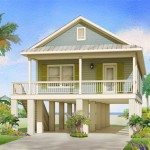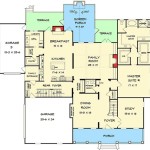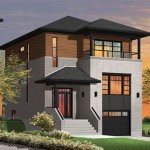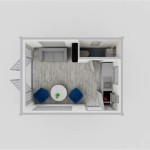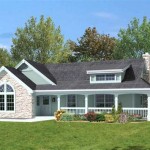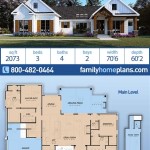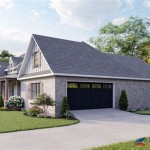```html
Floor Plans of Log Cabins: A Comprehensive Guide
Log cabins evoke a sense of rustic charm and connection to nature. Their appeal extends beyond aesthetics, encompassing a desire for simpler living and a retreat from the complexities of modern life. The floor plan of a log cabin is fundamental to realizing this vision, influencing not only the functionality of the space but also its overall ambiance and suitability for the intended purpose, whether it be a weekend getaway, a full-time residence, or a rental property.
Designing or selecting a log cabin floor plan requires careful consideration of various factors, including the size and shape of the lot, the intended use of the cabin, the number of occupants, budget constraints, and personal preferences. This article provides a comprehensive overview of the key aspects involved in understanding and choosing appropriate floor plans for log cabins.
Understanding Space Requirements
Before examining specific floor plans, it is crucial to determine the necessary square footage. This involves assessing individual needs and lifestyle. A single individual seeking a solitary retreat will have significantly different requirements than a family with children. The primary considerations are the number of bedrooms and bathrooms required, the size of the living and dining areas, and the necessity of additional spaces such as a home office, game room, or storage areas.
The number of bedrooms directly correlates with the number of individuals who will regularly occupy the cabin. It is essential to consider future needs as well, such as accommodating guests or expanding the family. Bathrooms should be conveniently located and adequately sized to meet the needs of the occupants. The number of bathrooms may depend on the number of bedrooms and the overall size of the cabin.
Living and dining areas serve as communal spaces for relaxation, entertainment, and meals. The desired size of these areas depends on the number of occupants and the frequency of gatherings. A large living room with ample seating is ideal for families and those who frequently entertain, while a smaller, cozier space may suffice for individuals or couples. The dining area should be appropriately sized to accommodate the number of people who will regularly dine together.
Additional spaces, such as a home office, game room, or storage areas, should be incorporated into the floor plan based on individual needs and preferences. Remote work has become increasingly prevalent, making a dedicated home office a valuable addition. A game room can provide entertainment for children and adults alike. Adequate storage space is essential for maintaining a clutter-free and organized living environment.
Beyond functional necessities, consider the desired ambiance of the cabin. Open floor plans, characterized by minimal walls separating the living, dining, and kitchen areas, promote a sense of spaciousness and connectivity. Conversely, more compartmentalized floor plans offer greater privacy and sound insulation between rooms. The choice between open and compartmentalized floor plans depends on personal preferences and lifestyle.
Common Log Cabin Floor Plan Types
Log cabin floor plans range from simple, one-room designs to multi-story structures with intricate layouts. Understanding the different types of floor plans available can facilitate the selection process. Some of the most common types include:
*The One-Room Cabin:
This is the simplest and most economical option, consisting of a single room that serves as the living, dining, and sleeping area. A separate bathroom and kitchenette may be included. This type of cabin is suitable for individuals or couples seeking a minimalist retreat. *The Two-Room Cabin:
This design typically features a main living area and a separate bedroom. A bathroom and kitchenette are also included. This floor plan provides more privacy than the one-room cabin and is suitable for couples or small families. *The Loft Cabin:
This design incorporates a loft space above the main living area, which can be used as a bedroom, office, or storage area. Loft cabins maximize vertical space and can provide a sense of spaciousness, particularly with vaulted ceilings. *The Ranch-Style Cabin:
This is a single-story cabin with a sprawling layout, often featuring multiple bedrooms, bathrooms, and living areas. Ranch-style cabins are suitable for larger families or those who prefer a more traditional layout. *The Two-Story Cabin:
This design features two levels, with the main living areas typically located on the ground floor and the bedrooms on the upper floor. Two-story cabins offer ample living space and can accommodate larger families.Each of these floor plan types can be customized to suit individual needs and preferences. The layout of the rooms, the placement of windows and doors, and the choice of materials can all be tailored to create a unique and personalized living space.
Key Considerations for Selecting a Floor Plan
Selecting the right log cabin floor plan is a crucial step in creating a comfortable and functional living space. Several key considerations should be taken into account to ensure that the chosen floor plan meets individual needs and lifestyle:
*Orientation and Sunlight:
The orientation of the cabin on the lot should be carefully considered to maximize sunlight exposure and minimize energy consumption. Orienting the cabin with the long axis facing south can maximize solar gain in the winter, while strategically placed windows and overhangs can provide shade in the summer. *Traffic Flow:
The floor plan should facilitate a smooth and efficient flow of traffic between rooms. Avoid creating bottlenecks or dead ends. Consider the placement of doors and hallways to ensure easy access to all areas of the cabin. *Privacy:
The floor plan should provide adequate privacy for all occupants. Bedrooms should be located away from common areas, and bathrooms should be easily accessible without intruding on other spaces. *Accessibility:
If accessibility is a concern, consider incorporating features such as wider doorways, ramps, and accessible bathrooms. Single-story cabins are generally more accessible than two-story cabins. *Budget:
The cost of building a log cabin can vary significantly depending on the size, complexity, and materials used. Establish a budget early in the planning process and select a floor plan that fits within that budget. *Local Building Codes:
Ensure that the chosen floor plan complies with all applicable local building codes and regulations. This may involve obtaining permits and inspections.Careful consideration of these factors will help ensure that the chosen floor plan meets the needs and preferences of the occupants and provides a comfortable and functional living space for years to come.
In addition to these key considerations, it's also beneficial to think about future needs. Will the cabin be used as a primary residence, a vacation home, or a rental property? Will the number of occupants change over time? Anticipating future needs can help inform the selection of a floor plan that will remain suitable and adaptable for years to come.
Ultimately, selecting the right log cabin floor plan is a personal decision. It requires careful consideration of individual needs, lifestyle, and preferences. By understanding the different types of floor plans available and considering the key factors discussed in this article, individuals can create a log cabin that is both functional and aesthetically pleasing, providing a comfortable and inviting retreat from the stresses of modern life.
```
Log Cabin Floor Plans Many To Choose From

Lodge Log And Timber Floor Plans For Homes Lodges Cabins Bear Lake

Small Log Homes Kits Southland

6 Really Cozy Little Log Cabin Floor Plans

Log Cabin Floor Plans Kintner Modular Homes Builder Pennsylvania Custom Home Contractor

Lodge Log And Timber Floor Plans For Homes Lodges Cabins Bear Lake

12 Customizable Log Cabin Floor Plans For Your Future Build Hub

Luxury Log Home Floor Plans Cowboy Homes

Tiny Houses Living Large Southland Log Homes

33 Awesome Log Cabin Floor Plans Tru Siding

